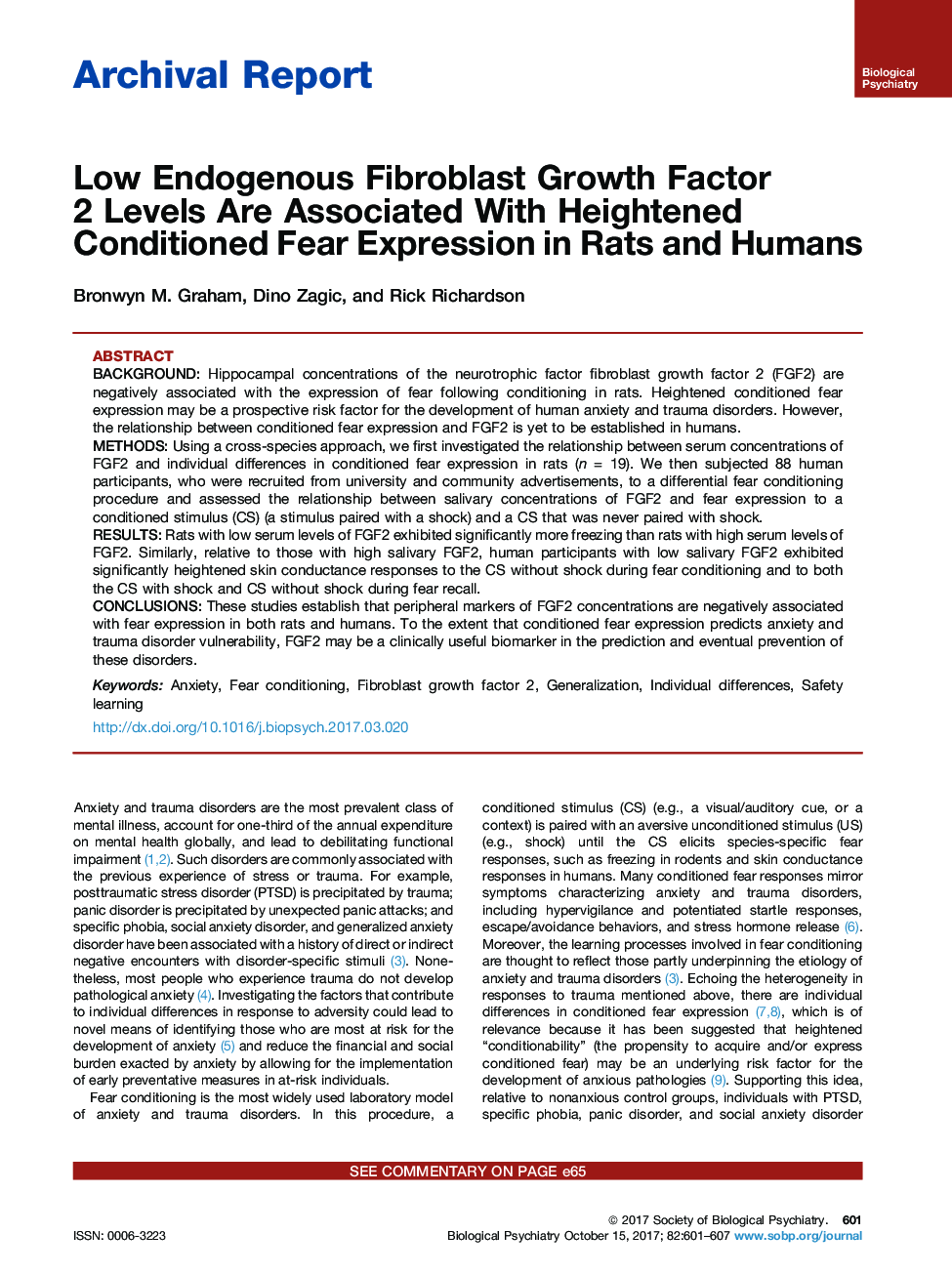| Article ID | Journal | Published Year | Pages | File Type |
|---|---|---|---|---|
| 5720740 | Biological Psychiatry | 2017 | 7 Pages |
BackgroundHippocampal concentrations of the neurotrophic factor fibroblast growth factor 2 (FGF2) are negatively associated with the expression of fear following conditioning in rats. Heightened conditioned fear expression may be a prospective risk factor for the development of human anxiety and trauma disorders. However, the relationship between conditioned fear expression and FGF2 is yet to be established in humans.MethodsUsing a cross-species approach, we first investigated the relationship between serum concentrations of FGF2 and individual differences in conditioned fear expression in rats (n = 19). We then subjected 88 human participants, who were recruited from university and community advertisements, to a differential fear conditioning procedure and assessed the relationship between salivary concentrations of FGF2 and fear expression to a conditioned stimulus (CS) (a stimulus paired with a shock) and a CS that was never paired with shock.ResultsRats with low serum levels of FGF2 exhibited significantly more freezing than rats with high serum levels of FGF2. Similarly, relative to those with high salivary FGF2, human participants with low salivary FGF2 exhibited significantly heightened skin conductance responses to the CS without shock during fear conditioning and to both the CS with shock and CS without shock during fear recall.ConclusionsThese studies establish that peripheral markers of FGF2 concentrations are negatively associated with fear expression in both rats and humans. To the extent that conditioned fear expression predicts anxiety and trauma disorder vulnerability, FGF2 may be a clinically useful biomarker in the prediction and eventual prevention of these disorders.
